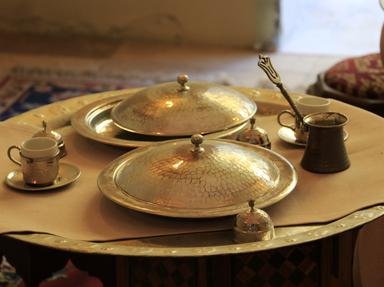Quiz Answer Key and Fun Facts
1. What was a crane, a central piece of equipment in hearth-cooking?
2. Hearth cooking got its name because you cooked most things on the hearth itself, rather than over the fireplace. How did you do that?
3. Pots and pans needed to be held up from the coals on the hearth, so the coals would have air circulation and keep burning. What did hearth cooks typically use to raise pots and pans?
4. This was a unique implement that used the heat of the fire reflected against its curved inner surface for baking or roasting. It was tin and therefore lighter than cast iron. What was it called?
5. The bake kettle, a three-footed pot with a lid, was primarily designed for what cooking style?
6. It looks like a grate to set a pot on. It was called a gridiron. What was it really for?
7. Jellies and preserves could easily be darkened by being boiled or simmered so long in iron pans. There were a few special pans with different interior surfaces for them. What were they?
8. Let's say all your frying pans are being used and you have no more trivets or space on the hearth for more coals anyway. But you want to fry up some pancakes. What's the solution?
9. Let's say you're looking for original cast iron pieces from the 19th Century, and maybe some from the 18th century would be cool too. What's one way of telling their age?
10. Besides the things mentioned so far, what were some other hearth cooking necessities to help you get into the pots and get the food out?
Source: Author
littlepup
This quiz was reviewed by FunTrivia editor
WesleyCrusher before going online.
Any errors found in FunTrivia content are routinely corrected through our feedback system.

